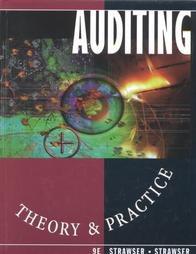

WN-Z Single Payment Compound Present Amount Worth Factor Factor (F/P, i, N) (P/F, i, N) 1.0900 0.9174 1.1881 0.8417 1.2950 0.7722 1.4116 0.7084 1.5386 0.6499 Compound Amount Factor (FIA, I, N) 1.0000 2.0900 3.2781 4.5731 5.9847 Equal Payment Series Sinking Present Fund Worth Factor Factor (A/F, i, N) (P/A, i, N) 1.0000 0.9174 0.4785 1.7591 0.3051 2.5313 0.2187 3.2397 0.1671 3.8897 Capital Recovery Factor (A/P, i, N) 1.0900 0.5685 0.3951 0.3087 0.2571 OOO 1.6771 1.8280 1.9926 2.1719 2.3674 0.5963 0.5470 0.5019 0.4604 0.4224 7.5233 9.2004 11.0285 13.0210 15.1929 0.1329 0.1087 0.0907 0.0768 0.0658 4.4859 5.0330 5.5348 5.9952 6.4177 0.2229 0.1987 0.1807 0.1668 0.1558 Problem 6-28 (algorithmic) Question Help Two 180-horsepower (HP) motors are being considered for installation at a municipal sewage-treatment plant. The first costs $7,000 and has an operating efficiency of 87%. The second costs $4,100 and has an efficiency of 77%. Both motors are projected to have zero salvage value after a life of 10 years. If all the annual charges, such as insurance maintenance, etc., amount to a total of 18% of the original cost of each motor, and if power costs are a flat five cents per kilowatt-hour, how many minimum hours of full-load operation per year are necessary to justify purchasing the more expensive motor at i = 9%? (A conversion factor you might find useful is 1 HP = 746 watts = 0.746 kilowatts.) Click the icon to view the interest factors for discrete compounding when i = 9% per year. A minimum of hours of full-load operation per year are necessary to justify purchasing the more expensive motor. (Round up to the nearest whole number.) WN-Z Single Payment Compound Present Amount Worth Factor Factor (F/P, i, N) (P/F, i, N) 1.0900 0.9174 1.1881 0.8417 1.2950 0.7722 1.4116 0.7084 1.5386 0.6499 Compound Amount Factor (FIA, I, N) 1.0000 2.0900 3.2781 4.5731 5.9847 Equal Payment Series Sinking Present Fund Worth Factor Factor (A/F, i, N) (P/A, i, N) 1.0000 0.9174 0.4785 1.7591 0.3051 2.5313 0.2187 3.2397 0.1671 3.8897 Capital Recovery Factor (A/P, i, N) 1.0900 0.5685 0.3951 0.3087 0.2571 OOO 1.6771 1.8280 1.9926 2.1719 2.3674 0.5963 0.5470 0.5019 0.4604 0.4224 7.5233 9.2004 11.0285 13.0210 15.1929 0.1329 0.1087 0.0907 0.0768 0.0658 4.4859 5.0330 5.5348 5.9952 6.4177 0.2229 0.1987 0.1807 0.1668 0.1558 Problem 6-28 (algorithmic) Question Help Two 180-horsepower (HP) motors are being considered for installation at a municipal sewage-treatment plant. The first costs $7,000 and has an operating efficiency of 87%. The second costs $4,100 and has an efficiency of 77%. Both motors are projected to have zero salvage value after a life of 10 years. If all the annual charges, such as insurance maintenance, etc., amount to a total of 18% of the original cost of each motor, and if power costs are a flat five cents per kilowatt-hour, how many minimum hours of full-load operation per year are necessary to justify purchasing the more expensive motor at i = 9%? (A conversion factor you might find useful is 1 HP = 746 watts = 0.746 kilowatts.) Click the icon to view the interest factors for discrete compounding when i = 9% per year. A minimum of hours of full-load operation per year are necessary to justify purchasing the more expensive motor. (Round up to the nearest whole number.)








